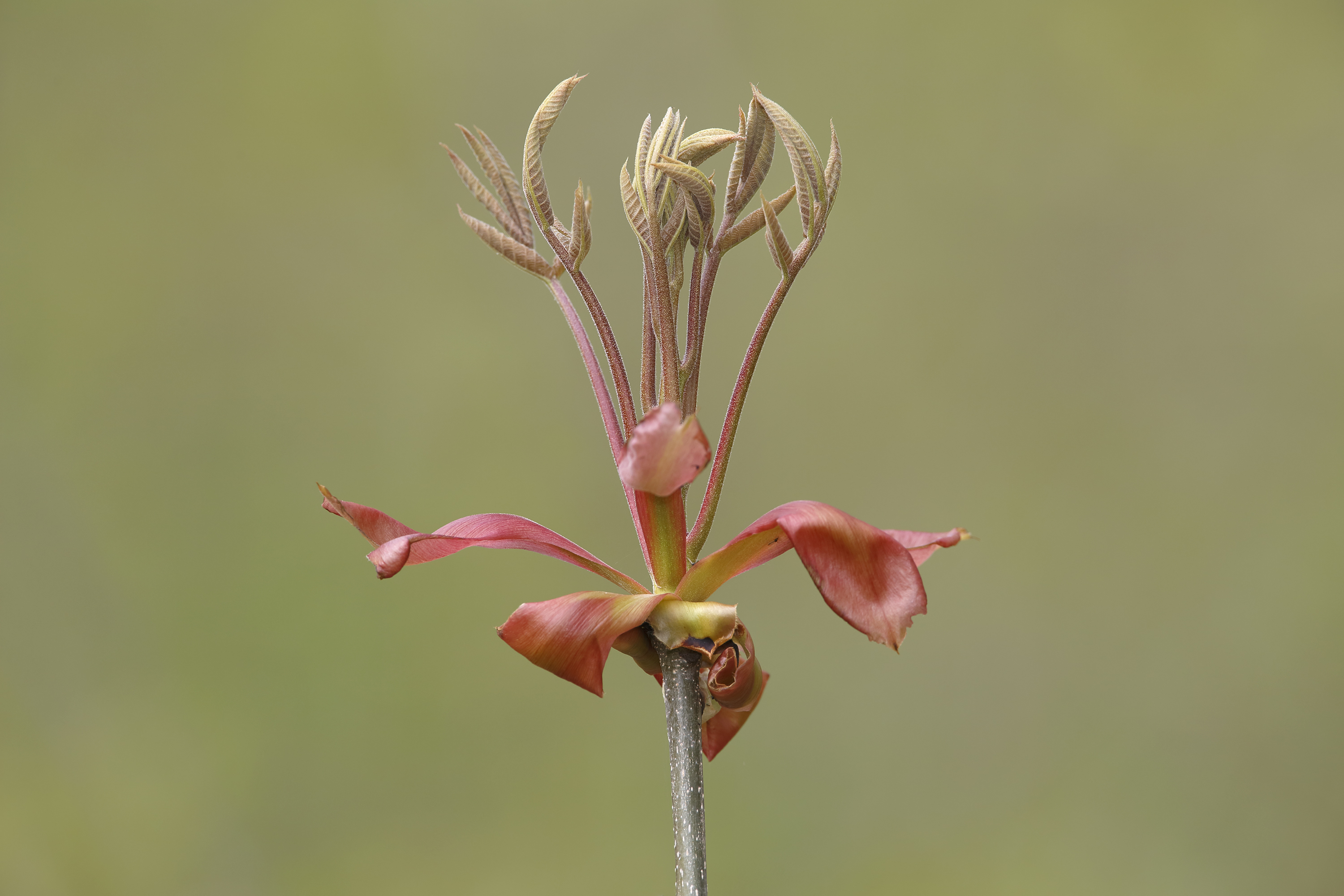Shagbark hickory
(Carya ovata)

Description
Carya ovata, commonly known as the shagbark hickory or the king nut, is a deciduous tree that is native to North America. The shagbark hickory tree is known for its distinctive bark, which peels away in long, shaggy strips. The tree is also known for its large, edible nuts, which are a popular food source for a variety of animals and humans. In this article, we will explore the botanical characteristics, natural habitat, cultural significance, and ecological roles of Carya ovata. Botanical Characteristics: Carya ovata is a large, slow-growing tree that can reach heights of up to 100 feet (30 meters) and can live for up to 350 years. The tree has a broad, rounded crown and a straight, sturdy trunk that can grow up to 4 feet (1.2 meters) in diameter. The leaves of Carya ovata are pinnately compound, with five to seven leaflets that are dark green in color and up to 12 inches (30 cm) long. The tree blooms in the spring, producing small, yellow-green flowers that are pollinated by wind or insects. The fruit of Carya ovata is a large, round nut that is enclosed in a hard, thick husk. The nut is 1-3 inches (2.5-7.6 cm) in diameter and contains a single, edible kernel. Natural Habitat: Carya ovata is native to the eastern United States, where it can be found growing in a variety of habitats, including forests, woodlands, and riparian areas. The tree is particularly common in the Midwest and the Northeast, where it is a dominant species in many forests. The shagbark hickory tree is adapted to a wide range of soil types, but it prefers well-drained, acidic soils. The tree is also tolerant of drought and can grow in areas with low rainfall. Cultural Significance: Carya ovata has a long history of use by Native American tribes, who valued the tree for its nuts, bark, and wood. The nuts of Carya ovata were an important food source, and they were eaten raw or roasted, ground into flour, or used to make oil. The bark of the shagbark hickory tree was used to make baskets, mats, and cordage, while the wood was used to make tools, furniture, and musical instruments. The shagbark hickory tree has also played a role in American folklore and literature, and it is a popular tree for landscaping and shade. Ecological Roles: Carya ovata plays an important role in forest ecosystems, providing food and habitat for a wide range of animals, including birds, squirrels, deer, and bears. The shagbark hickory tree is also an important source of nutrients for the soil, as the fallen leaves and nuts decompose and release nutrients into the ground. The deep roots of Carya ovata help to stabilize the soil and prevent erosion, while the tree's dense canopy provides shade and helps to regulate temperature and moisture levels in the forest. Conclusion: Carya ovata, or the shagbark hickory tree, is a remarkable species that is well-adapted to its natural habitat and plays an important ecological and cultural role in North America. Its distinctive bark, edible nuts, and durable wood make it a valuable resource for humans, while its ecological roles as a food and habitat source, nutrient contributor, and soil stabilizer make it an important species for forest ecosystems. As a plant expert, it is important to appreciate the unique characteristics and contributions of Carya ovata to our natural and cultural heritage.
Taxonomic tree:







